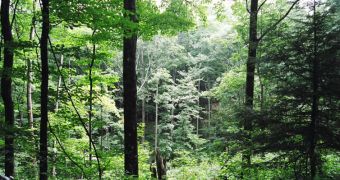Scientists have recently finished an 18-year-long study on the effects of climate on tree fecundity and growth, and the conclusions are not all that encouraging. It was found that the ability trees have, of producing viable seeds, is much more reliant on climate change than was originally believed.
This major study implies that the slight changes in global temperature accompanying Earth's warming are bound to have much more severe effects on forests worldwide than expert initially estimated.
The new investigation was carried out on no less than 27,000 trees that were surveyed for nearly two decades. The study was funded by a grant from the US National Science Foundation (NSF).
One of the most significant factors found to influence the development of new trees is spring warming, a phenomenon that now takes place earlier in the year than it did at the time the study began.
Tree reproduction and growth is entirely dependent on when this happens, researchers behind the new work write in the April 5 issue of the esteemed scientific journal Global Change Biology.
“In a sense, what we've done is an epidemiological study on trees to better understand how and why certain species, or demographics, are sensitive to variation and in what ways,” explains Duke University expert James Clark, the lead author of the journal entry.
Another risk factor of tree survival is summer drought. Though this has been suspected for some time, surprisingly few studies have ever been conducted on the issue, which led experts to largely overlook this problem.
In the 18-year investigation, Clark and his team recorded a total of 280,000 tree-years of data, by measuring the growth, mortality and fecundity of all 27,000 trees at least once every three years.
“This work demonstrates the limitations of current modeling approaches to predict which species are vulnerable to climate change and illustrates the importance of incorporating ecological factors such as species competition,” explains Alan Tessier.
He holds an appointment as a program director in the NSF Division of Environmental Biology. The DEB provided the necessary funding for this investigation. “As climate continues to change, we know forests will respond,” Clark adds.
“By quantifying the effects and relative importance of competition [between species] and climate variables, including impacts on fecundity, over both time and space, the model we've developed addresses this need and can be used to guide planning,” the team leader adds.
“Trees are much more sensitive to climate variation than can be interpreted from regional climate averages,” he concludes.

 14 DAY TRIAL //
14 DAY TRIAL //